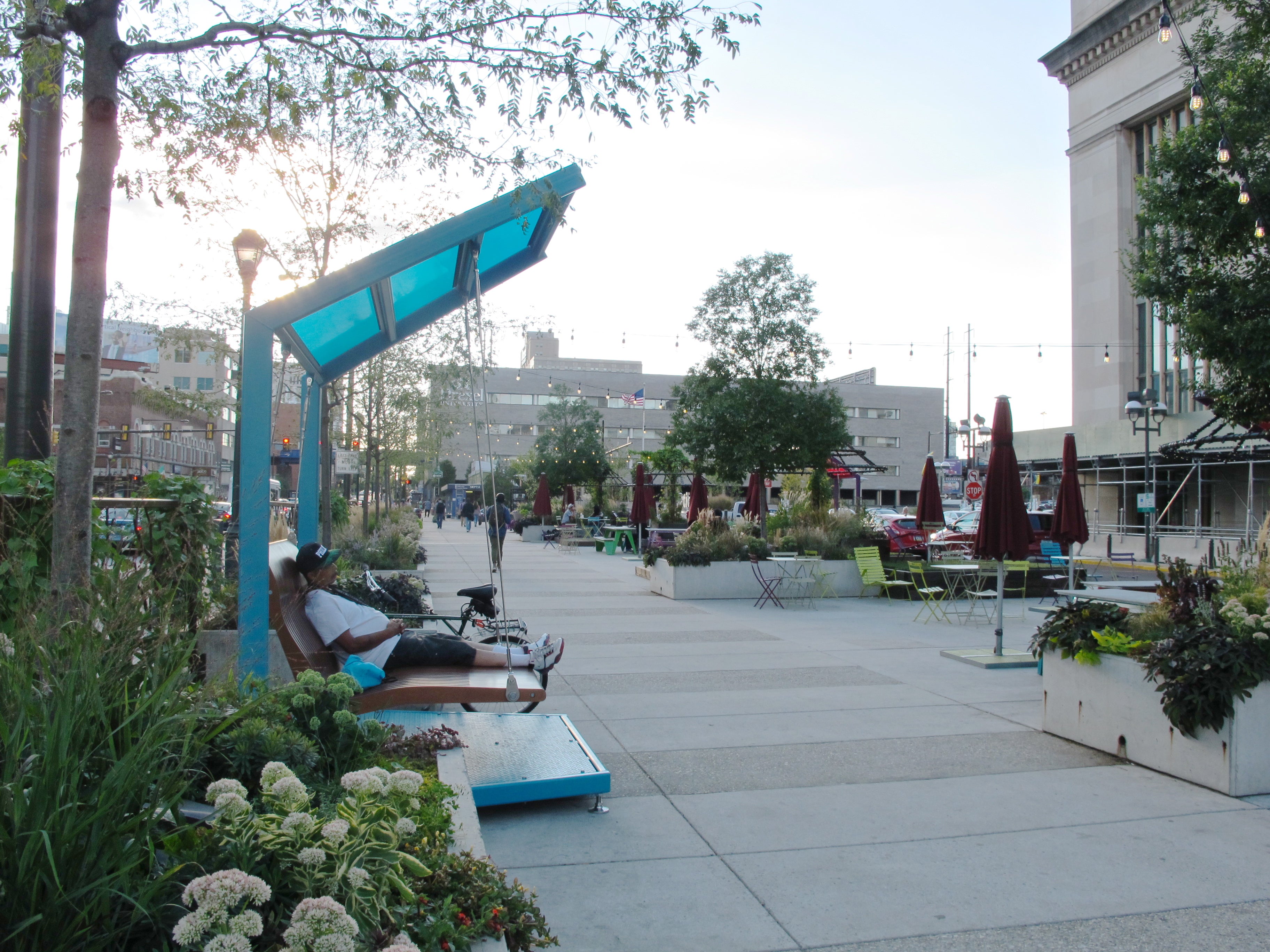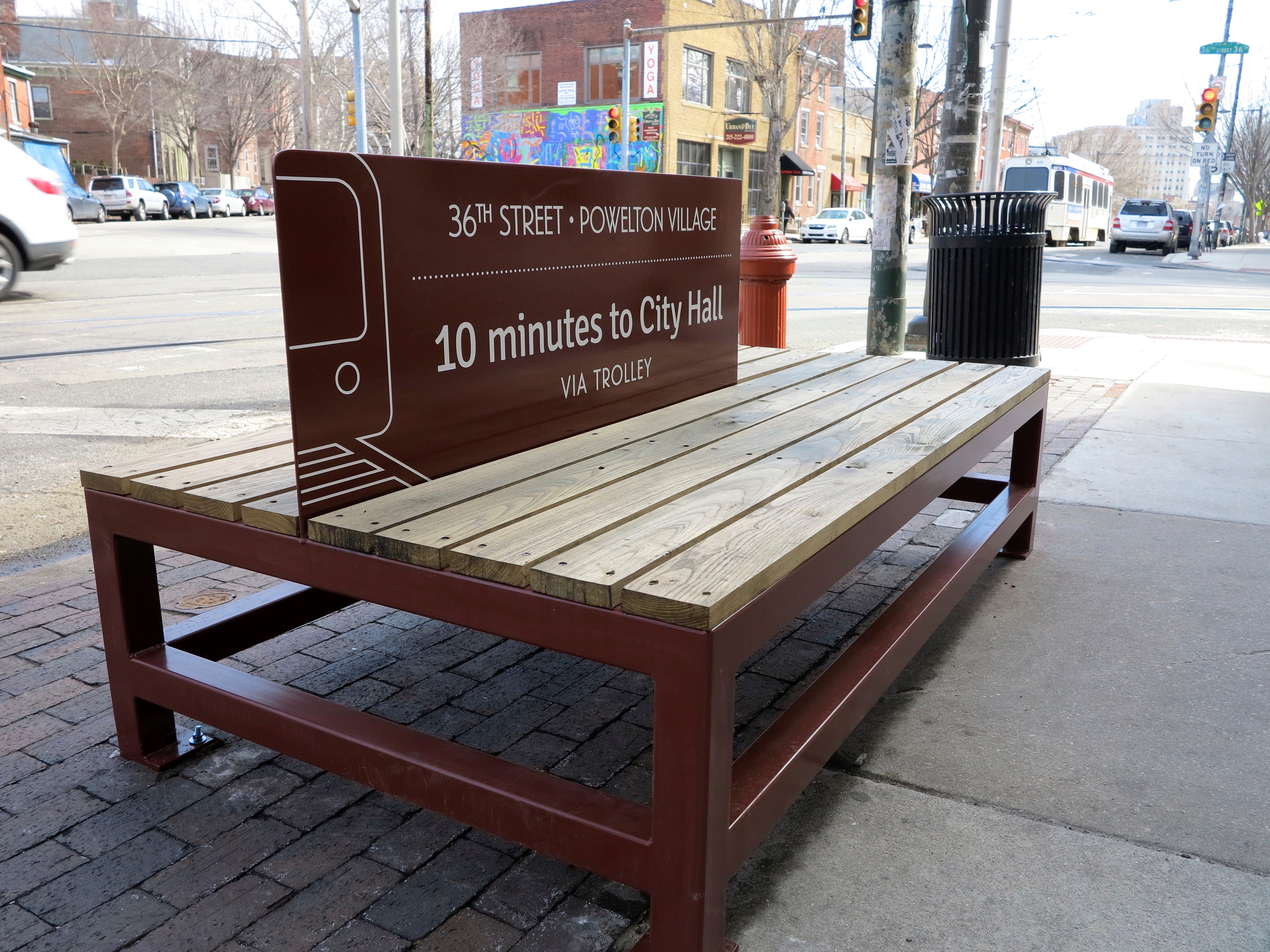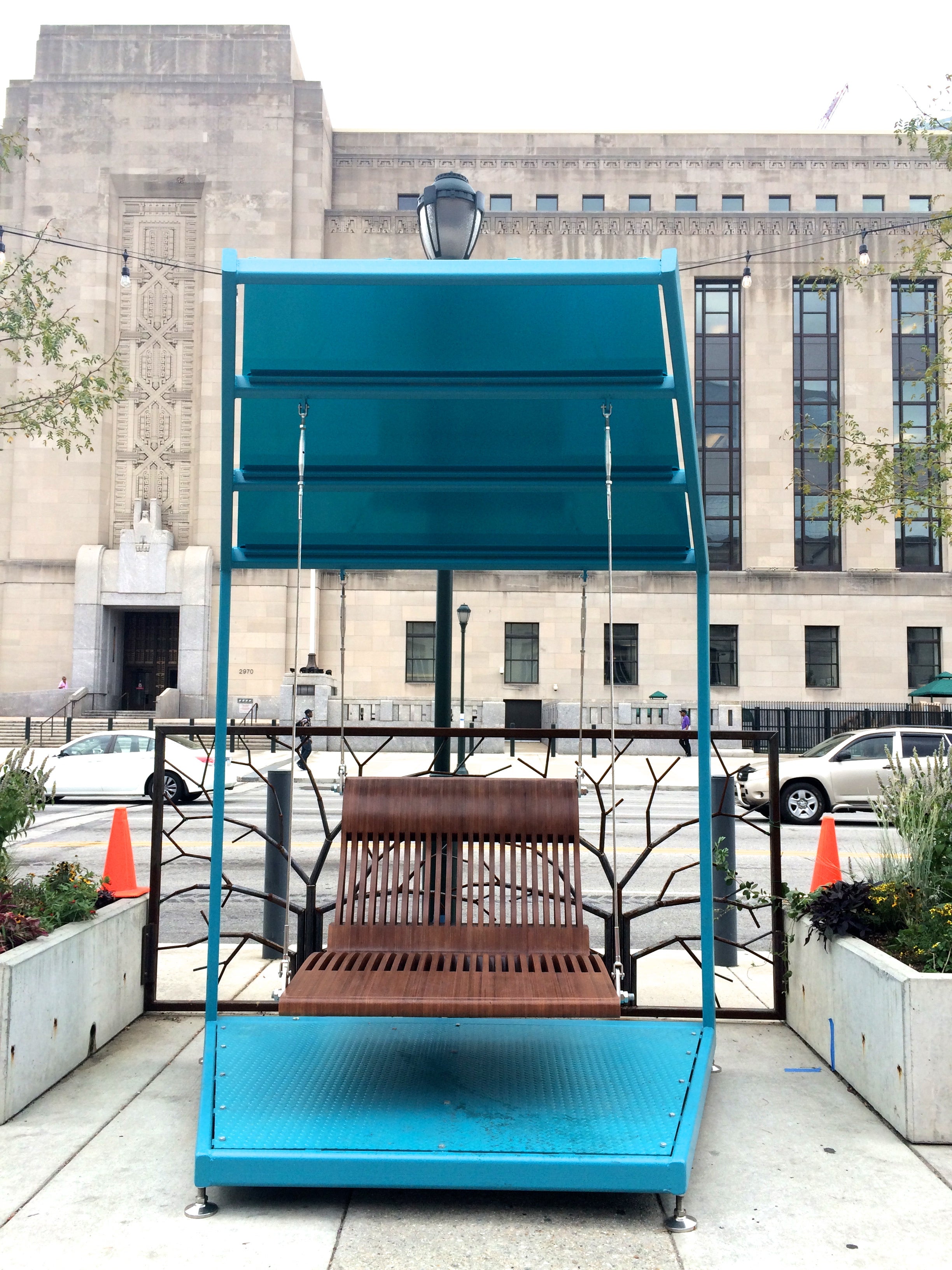Aiming for inclusive public spaces, University City District bucks defensive design trends

University City District covers one of the blessed corners of Philadelphia. There’s little blight or crime for the special services district to contend with. Job growth can fairly be described as explosive. It’s even sprouting a new skyline.
One of the tasks University City District (UCD) has set for itself, and pursued with great skill, is “creative placemaking”. It installs street furniture and pop-up parklets that are meant to maximize public space, transforming underused corners of the city into attractions.
But with public space comes potential conflict, especially between the privileged classes urban designers often cater to and those who live on the margins of city life. In recent years online journalists and activists have documented the “defensive architecture” cities use to drive off various low-status users. Most commonly, a host of design choices are used to keep people experiencing homelessness from lying down and getting some sleep. These range from “bum bars” in the center of park benches to laying down rows of spikes in doorways to prevent anyone from loitering at all.
As UCD expands its placemaking efforts, it has taken a different approach. Special services districts have often been on the quickest to choose defensive design strategies and other policies that target the homeless. Public-private partnerships, like business improvement districts and other special service districts, provide services to their particular areas, going beyond what cash-strapped municipal governments are able to offer. But the constituent base for these districts is often narrow and, critics fear, too limited to the property owners and institutions that found and fund them.
Although UCD is entirely supported by large institutions west of the Schuylkill River, including Drexel University and the University of Pennsylvania, it has bucked the defensive design trend.
“Our goal is to provide a space that doesn’t say ‘get out of here,’” says Alissa Weiss, UCD’s Director of Strategic Initiatives and Communications.
UCD highlights the brightly colored furniture at The Porch, the hugely successful public space it has created around 30th Street Station. The Porch has furniture for the use of weary travelers, including moveable chairs and large swings. During warmer months, homeless people sleeping use the latter.
In the past couple of years, new transit benches have been installed at three trolley stops in West Philadelphia. The benches have segmented seats facing different directions, allowing numerous people to occupy the street furniture at the same time without necessarily having to interact. They are notably free of the obstructions and handrails that chop up most public benches and prevent anyone from sprawling out.
“When I see the most vulnerable members of society using our public places that says we’ve created a space that’s really working,” says Andrew Stober, UCD’s Vice President of Planning and Economic Development. UCD, he says, aims to design and operate public spaces that are welcoming for everyone.
“What makes people feel unsafe is anti-social behavior regardless of who’s engaging in it. Drunk frat boys, or someone who spends their night in a shelter and is drunk in a public space—all of that will make people uncomfortable. You can’t design your way out of that.”
The lack of impediments to homeless people did cause comment. Before the transit bench at 47th Street and Baltimore Avenue was installed, UCD apprised nearby property owners of its plans. Some shopkeepers expressed fears that the benches would become magnets for panhandling on this neighborhood commercial corridor.
UCD’s response speaks to one of the chief reasons the organization is able to avoid defensive architecture. They told the owner that if there were ever a problem, they should just call the organization’s “ambassadors”—the yellow jacketed unarmed officers who patrol UCD’s territory.
That offer allayed the business owner’s fears. The ambassadors have never been called about the bench.
Stober and Weiss are quick to highlight what separates the ambassadors from police or other security guards. These men and women are not a jack-booted security service, they emphasize, but an outreach effort to put more eyes on the street. They are trained to offer assistance to individuals who they believe may be in distress.
In the last year, UCD began to offer “Mental Health First Aid” training, in which officers are instructed about how to approach people in distress and what to say (or not to say). A longstanding partnership with Project HOME allows the ambassadors to offer homeless individuals meaningful help, if they want it.
In the last couple years, UCD officers have been collecting data on their referrals of homeless individuals to Project HOME for assistance. If the person accepts, then the ambassador will wait with them until the Project HOME outreach team arrives. If not, the ambassador will leave them in peace. If an individual is engaged in violent or antisocial behavior, they are asked to move along. In extreme incidents, the police are called although UCD says there have only been a few times that’s ever been deemed necessary.
Between June 2015 and May 2017, there have been 635 contacts and 201 successful connections to Project HOME. Some were repeat encounters with the same individuals.
“Choosing to work with Project Home was a conscious decision,” says Weiss. “As opposed to just saying ‘here’s some places to get a meal, now get out of here.”
Joan Maya Mazelis, a Rutgers University sociology professor, says that she’s been favorably impressed by UCD’s design efforts. An expert on urban poverty, she says that the BID’s more humane approach stands in stark contrast with the anti-homeless management policies of other forms of privately managed public space.
“They get to enjoy the space like everyone else, which is great because they are citizens of Philadelphia like everybody else,” says Mazelis. And she sees that as a good thing “because it helps take away fear and stigma people have about those who don’t have any place to live.”
There are other factors at work in UCD’s rejection of defensive architecture. Unlike some of the other BIDs that have stirred controversy with their policies towards the homeless, like the Grand Central Partnership in New York, UCD doesn’t have a persistent concentration of homeless people in its jurisdiction. The part of West Philadelphia covered by UCD isn’t known as a center for outdoor sleeping. The more serious potential flash point has been The Porch, which is directly across the river from Center City—where much of Philadelphia’s homeless population is concentrated—and where Amtrak fears an abundance of panhandlers will spook its clientele. But in the end, UCD was able to convince Amtrak that its ambassadors would be able to handle any disturbances.
“People who are pretty clearly living in shelters use The Porch a lot,” says Stober. “There’s a woman who sleeps pretty regularly at The Porch, with her shopping cart where she has all her worldly belongings neatly packed in. She takes one of the big swings and I don’t think she makes anyone uncomfortable.”
Stober remembers one recent afternoon when he saw her asleep on her regular swing and another man—bearing luggage, dressed in professional attire, and presumably waiting for a train—asleep on the swing next to hers.
“Sleeping is when we are at our most vulnerable, if there is a place where you feel safe to sleep it says a lot about the success of a space,” says Stober.
WHYY is your source for fact-based, in-depth journalism and information. As a nonprofit organization, we rely on financial support from readers like you. Please give today.







